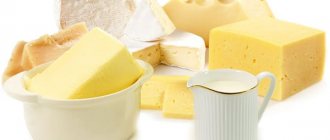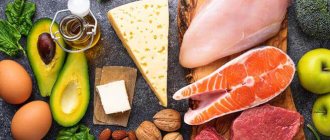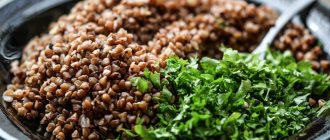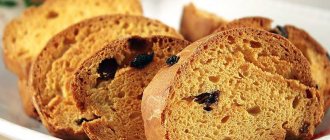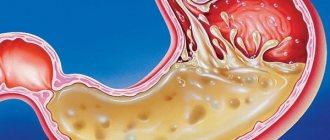Many people who follow the AIP diet report an improvement in their overall health, as well as a reduction in symptoms of autoimmune diseases such as fatigue and gut or joint pain. However, while the research on this diet is promising, it is also limited ().
This article offers a comprehensive overview of the AIP diet, including the science behind it and what is currently known about its ability to reduce symptoms of autoimmune diseases.
What is the AIP diet?
A healthy immune system is designed to produce antibodies that attack foreign or harmful cells in your body.
However, in people with autoimmune diseases, the immune system tends to produce antibodies that, instead of fighting infections, attack healthy cells and tissues.
This can lead to a range of symptoms, including joint pain, fatigue, abdominal pain, diarrhea, brain fog, and tissue and nerve damage.
A few examples of autoimmune diseases are autoimmune thyroiditis, rheumatoid arthritis, systemic lupus erythematosus, IBD, type 1 diabetes, and psoriasis.
Autoimmune diseases are thought to be caused by a variety of factors, including genetic predisposition, infection, stress, inflammation and medications.
Additionally, some research suggests that in susceptible individuals, damage to the intestinal lining can lead to increased intestinal permeability, also known as leaky gut syndrome, which can trigger the development of certain autoimmune diseases ().
It is believed that certain foods can increase intestinal permeability, thereby increasing the likelihood of leaky gut syndrome.
The AIP diet aims to eliminate these foods and replace them with healthy, nutrient dense foods that are believed to help heal the gut and ultimately reduce inflammation and symptoms of autoimmune diseases ().
It also excludes certain ingredients, such as gluten, that can cause abnormal immune responses in susceptible people (,).
While experts believe leaky gut syndrome may be a plausible explanation for the inflammation experienced by people with autoimmune diseases, they caution that current research is unable to confirm a cause-and-effect relationship between the two ().
Therefore, more research is needed before conclusive conclusions can be drawn.
Summary:
The AIP (autoimmune protocol) diet aims to reduce the inflammation, pain and other symptoms experienced by people with autoimmune diseases by healing their leaky gut and removing potentially problematic foods from their diet.
Causes of autoimmune diseases
Photo by Sunsetoned: Pexels
This question is still under study. As a rule, this is a combination of several factors at once: genetic predisposition, lifestyle, psycho-emotional state. That is, both congenital and external factors play a role.
Pathogenic effects are also known. Pathogen proteins that are similar to “native” proteins enter the body, the immune system reacts to them, attacks them, and mistakenly also attacks “its own” proteins. So, immune cells attacked the cells of vital organs.
And who comes under fire?
For example, with psoriasis, healthy skin cells are attacked; with complications, psoriasis can damage joints and other organs; with autoimmune Hashimoto's therioditis/Graves' disease - the thyroid gland, which is responsible for metabolism, energy supply to the body, and all metabolic processes occurring in cells, is attacked; with rheumatoid arthritis, joint tissue is attacked; in multiple sclerosis – nerve fiber sheaths, etc.
AIP nutrition protocol for autoimmune diseases
How does AIP work?
The AIP diet resembles the Paleo diet both in the types of foods allowed and avoided, and in the phases of which it consists. Because of their similarities, many consider the AIP diet to be an extension of the Paleo diet, although the AIP can be considered a stricter version of it.
The AIP diet consists of two main phases.
Elimination phase
The first phase is the elimination phase, which involves eliminating foods and medications that are thought to cause gut inflammation, an imbalance between the levels of good and bad bacteria in the gut, or an immune response (,).
During this stage, foods such as grains, legumes, nuts, seeds, nightshade vegetables, eggs and dairy products are completely avoided.
You should also avoid tobacco, alcohol, coffee, vegetable oils, dietary supplements, refined and processed sugar, and certain medications such as nonsteroidal anti-inflammatory drugs (NSAIDs) ().
Examples of NSAIDs are ibuprofen, naproxen, diclofenac, and high-dose aspirin.
On the other hand, this phase encourages consumption of fresh, nutrient-dense foods, minimally processed meats, fermented foods, and bone broth. She also emphasizes the importance of improving lifestyle factors such as stress, sleep and physical activity ().
The length of the diet withdrawal phase varies as it is usually maintained until the person experiences a noticeable reduction in symptoms. On average, most people maintain this phase for 30–90 days, but some may notice improvements within the first 3 weeks (, ).
Reintroduction phase
Once there is noticeable relief of symptoms and an improvement in overall health, the reintroduction phase of foods can begin. At this stage, eliminated foods are gradually reintroduced into the diet, one at a time, depending on the person's tolerance.
The goal of this phase is to determine which foods cause a person's symptoms and reintroduce any foods that do not cause any symptoms into the diet while continuing to avoid those that do. This allows you to maximally expand the list of well-tolerated foods, due to which you can achieve significantly greater variety in consumed foods, compared to the elimination phase.
At this stage, foods should be reintroduced one at a time, allowing for 5–7 days before reintroducing other foods. This gives the person enough time to notice if any of their symptoms reappear before continuing the process of reintroducing other foods ().
Well-tolerated foods can be reintroduced into the diet, while foods that cause symptoms should be avoided. Keep in mind that your food tolerance may change over time.
This way, you can repeat the test from time to time to re-enable products that initially failed the test.
Step-by-step reintroduction protocol
Here's a step-by-step approach to reintroducing foods that were avoided during the elimination phase of the AIP diet.
- Step 1 . Choose one food to reintroduce into your diet. Plan to consume this product several times a day on the day of testing, and then stop using it completely for 5 to 6 days.
- Step 2 . Eat a small amount of the product, such as 1 teaspoon, and wait 15 minutes to see if you have a reaction.
- Step 3 . If you experience any symptoms, stop the test and avoid this food. If you do not have symptoms, eat a slightly larger portion, such as 1 1/2 tablespoons of the same food, and monitor how you feel for 2 to 3 hours.
- Step 4 . If you experience any symptoms during this period, stop the test and discard this product. If symptoms do not occur, eat a normal serving of the same food and avoid it for 5 to 6 days without reintroducing any other foods.
- Step 5 . If you do not experience any symptoms after 5 to 6 days, you can reintroduce the tested food into your diet and repeat this 5-step reintroduction process with the new food.
Under circumstances that may increase inflammation and make results difficult to interpret, it is best to avoid reintroducing foods into the diet. These include periods of illness, such as infections; poor night's sleep; excessive stress or strenuous exercise.
Additionally, it is sometimes recommended to reintroduce foods in a specific order. For example, when reintroducing dairy products, choose the dairy product with the lowest lactose concentration to reintroduce first, such as ghee or fermented dairy products.
Summary:
The AIP diet first eliminates any foods that may cause symptoms for several weeks. Each food is then reintroduced separately, and only those that do not cause symptoms can ultimately be reintroduced into the diet.
What is the paleo diet
In this article we will tell you about the key principles of this atypical nutrition plan.
Whether your primary goal is losing excess fat, building more muscle, or building a ripped physique, a healthy diet is a key element needed to achieve success.
It is clear that the food you put into your body every day is one of the primary factors that determines your appearance. Illiterate food choices negatively affect the aesthetics of the physique. On the contrary, if you choose only high-quality nutritious foods when creating your diet, you can be sure that this will have a positive effect on your figure.
One of the most popular diet plans that you've probably heard about from health enthusiasts or read about in specialized books and magazines is the paleo diet. What is the essence of this nutrition plan and can it really produce tangible results? By understanding the concept behind the paleo diet, you can get a clear picture of whether this diet is right for you specifically. In this article we will tell you about the key principles of this atypical nutrition plan.
Paleo approach
Essentially, the Paleo Diet (short for Paleolithic Diet) is an approach to nutrition that dates back to prehistoric times and attempts to recreate the diet of cavemen.
Undoubtedly, since the time of our distant ancestors, the approach to nutrition has evolved significantly; a lot of new culinary processes and modern technologies for processing and preserving food have appeared. While cavemen had to obtain their own food through hunting and gathering, today we can simply go to the grocery store and choose from hundreds of processed, ready-to-eat foods.
The problem is that, due to all the changes that have taken place, the nutritional value of our daily diet has deteriorated significantly, since in the modern world we are forced to consume food in a form that is not naturally intended by nature.
The concept of the Paleolithic diet involves going back to prehistoric times. This approach to nutrition involves avoiding all processed foods and focusing on natural foods.
Essentially, if certain foods were widely available thousands of years ago, why can't they form the basis of our diet today? The concept suggests that the daily diet should primarily consist of meat, fish, a variety of fresh fruits and vegetables, as well as nuts and seeds.
The paleo diet involves eliminating dairy products, grains, grains, legumes, high-starch vegetables, fatty meats, and foods that are very high in salt (for example, sausages and salted nuts). The exception is vegetable oils, the use of which is usually allowed in moderation.
Benefits of the Paleo Diet
What are the main benefits of the paleo diet? Is this diet plan right for you?
The Paleo diet helps you effectively control your blood sugar levels. In a modern world where many people suffer from constant swings in blood sugar levels, this fact alone is an extremely beneficial aspect of the paleo approach.
The more stable your blood sugar levels are, the less likely you are to crave junk food. The paleo diet has also been proven to help combat constant fatigue and reduce the potential risk of developing type 2 diabetes.
Because the Paleo diet is high in healthy fats due to the frequent consumption of seeds and nuts, and at the same time low in saturated fat due to the limited consumption of dairy and meat products, the Paleo diet helps reduce cholesterol levels and therefore reduce the risk of developing heart disease. -vascular system.
When following a paleo diet, you will have no problem getting enough protein, which is necessary for effective fat burning and muscle building, since almost every meal includes the consumption of lean meat. And including a wide range of different fruits and vegetables in your diet will help you reduce your calorie intake, which will be very useful in terms of losing excess weight.
If you're looking to build muscle, which requires a calorie surplus, you can simply add more nuts and seeds to your diet. This way, you can both increase your calorie intake and get more healthy fats.
Since the Paleo diet eliminates the consumption of any form of processed and refined carbohydrates, naturally for most people this will mean reducing calorie intake. Plus, without ten different flavors of chips and eight different types of cereal, it will be much easier for you to adapt to your new nutrition plan and achieve the results you want.
Problems associated with the Paleo diet
What are the disadvantages, if any, of the Paleo diet?
The biggest challenge you may encounter with the Paleo diet, and which can easily be overcome with proper meal planning, is that if you are a very active person and regularly do high volumes of strength training, it will be more difficult for you to get enough of the required complex carbohydrates. Although you will get a certain amount of carbohydrates from fruits and vegetables, to provide your body with enough calories from carbohydrates, you will have to eat them almost all day without a break. It's quite difficult for the body to process that much fiber at once, so if you're aiming for 4,000+ calories per day, with 2,000 calories coming from carbohydrates, you're going to have to work really hard to create a healthy eating plan. Since glucose is the only effective source of fuel during high-intensity training (fat is not able to optimally support high-intensity physical activity), this leads to potential problems during the paleo diet. However, there is always a way out.
A reliable way to get around this problem is to focus on consuming high-carbohydrate fruits such as bananas, cherries and pineapples, which supply over 100 calories per 200g/large fruit.
Another option is to include healthy, unprocessed grains such as brown rice or oats in your diet. Of course, adding them to your diet goes beyond the paleo diet concept. However, if your deviation from your eating plan is limited to these healthy, natural sources of carbohydrates, you will still enjoy all the benefits that the paleo approach offers while getting the right amount of carbohydrates to boost energy and restore muscle glycogen stores.
While following the paleo diet, some people may face another problem. In particular, athletes who follow a vegetarian approach will have a very difficult time getting the amount of protein they need. Since the paleo diet excludes most vegetarian sources of protein, such as quinoa, soy, lentils, chickpeas and other legumes, vegetarians are left with few alternative options.
Vegetarian athletes following a paleo diet are advised to consider taking protein powders to meet their protein needs. Of course, this goes beyond the paleo diet, which does not allow the consumption of dairy products and eggs, but in a particular case such a step would be completely justified.
Where to begin
If you are serious about changing your lifestyle and starting to follow a paleo diet, the first thing you will have to do is stop consuming all types of processed carbohydrates and processed foods. After this, you will need to gradually eliminate dairy products, fatty meats and legumes from your diet. At the initial stages, this may seem like a difficult task, however, over time, it will become easier for you to adapt to the unique diet of the paleo diet.
Obviously, the Paleo approach cannot be classified as a very low-carb diet like the Atkins plan, since it involves eating a lot of fruits and vegetables. However, this nutrition plan offers numerous health benefits that will ensure optimal functioning of the body and help you effectively achieve your desired physique and maintain a healthy weight.
Foods to Eat and Avoid
The AIP diet has strict guidelines regarding which foods to eat and which to avoid during the elimination phase (,).
Foods to Avoid
- Grains : rice, wheat, oats, barley, rye, etc., and products derived from them such as pasta, bread and breakfast cereals
- Legumes : lentils, beans, peas, peanuts, etc., and products derived from them such as tofu, tempeh, pasta or peanut butter
- Nightshade vegetables : eggplant, peppers, potatoes, tomatoes, physalis vegetable, etc., as well as spices derived from nightshade vegetables, such as paprika
- Eggs : whole eggs, egg whites, or products containing these ingredients
- Dairy products : cow's, goat's or sheep's milk, as well as products derived from this milk, such as cream, cheese, butter or ghee; You should also avoid dairy-based protein powders or other additives
- Nuts and seeds : all nuts and seeds, as well as products derived from them, such as flours, oils or pastes; This also includes cocoa and seed-based spices such as coriander, cumin, anise, fennel, fenugreek, mustard and nutmeg
- Some drinks : alcohol and coffee
- Processed vegetable oils : sunflower, corn, soybean, canola, canola, cottonseed, palm kernel and safflower
- Refined or processed sugar : cane or beet sugar, corn syrup, brown rice syrup, and barley malt syrup; also includes sweets, sodas, candies, frozen desserts and chocolate that may contain these ingredients
- Food additives and artificial sweeteners : trans fats, food colors, emulsifiers and thickeners, and artificial sweeteners such as stevia, mannitol and xylitol
Some AIP protocols also recommend avoiding all fruits—both fresh and dried—during the elimination phase. Others allow you to include 10-40 grams of fructose per day, which is about 1-2 servings of fruit per day.
Although not specified in all AIP protocols, some also suggest avoiding algae such as spirulina or chlorella during the elimination phase, as this type of sea vegetable can also stimulate an immune response ().
What foods can you eat?
- Vegetables : Various vegetables other than nightshades and seaweed, which should be avoided
- Fresh fruit : a variety of fresh fruit in moderation
- Tubers : Sweet potatoes, taro root, yams, and Jerusalem artichokes or Chinese artichokes
- Minimally processed meat : game, fish, seafood, offal and poultry; meat should be obtained from poultry, fish and livestock raised in their natural conditions, as far as possible
- Probiotic-rich fermented foods : Dairy-free fermented foods such as kombucha, kimchi, sauerkraut, pickles, and coconut kefir; You can also take probiotic supplements
- Minimally processed vegetable oils : olive oil, avocado oil or coconut oil
- Spices : unless they come from seeds
- Vinegars : balsamic, apple cider vinegar and red wine vinegar, as long as they do not contain added sugars
- Natural sweeteners : maple syrup and honey in moderation
- Some teas : green and black tea on average up to 3–4 cups per day
- Bone broth
While this is allowed, some protocols also recommend that you limit your intake of salt, saturated and omega-6 fats, natural sugars such as honey or maple syrup, and coconut-based products.
Depending on the AIP protocol used, small amounts of fruit may also be allowed. This usually amounts to a maximum of 10–40 grams of fructose per day, which is equivalent to 1–2 servings of fresh fruit.
Some protocols also suggest limiting your intake of high glycemic index fruits and vegetables, including dried fruits, sweet potatoes and plantains.
The glycemic index (GI) is a system used to rank foods on a scale of 0 to 100 based on how much they raise blood sugar levels compared to white bread. High glycemic index fruits and vegetables are those that score 70 or higher on the GI scale ().
Summary:
The AIP diet typically consists of minimally processed, nutrient-dense foods. The lists above indicate which foods to eat and which to avoid during the elimination phase of the AIP diet.
Blog
What else is worth paying attention to:
- AIP is not only food. Efforts from nutrition can be lost due to lack of sleep, which leads to hormonal imbalance and increases stress levels. Go to bed before 23.00 and get enough sleep. Include light physical activity and walks in the fresh air for at least 30 minutes a day;
- Try to find an integrative medicine doctor who is AIP friendly to customize your diet individually while dealing with other autoimmunities;
- Aim for a 50/50 ratio of cooked to raw vegetables in your daily diet;
- Two nutritional factors that best adjust the intestinal microbiome are a high intake of omega-3 fatty acids (lots of fish!) and a large amount of fiber (from vegetables and fruits);
- Goitrogenic vegetables for thyroid diseases is a very controversial issue. Research on this matter is contradictory. However, the amount of goitrogens decreases during heat treatment. I prefer to eat cruciferous vegetables every other day and well cooked.
- Fruits: Many people avoid fruits because they are high in sugar. If you have SIBO (bacterial overgrowth) or SIGR (fungal overgrowth), you should limit your fructose intake. However, you should not exclude fruits completely; they are an important source of carbohydrates, fiber and antioxidants. Depending on which fruit you choose and the size of the fruit, you can usually enjoy 2-5 servings of fruit per day (up to 40 grams of fructose, 20 is optimal);
- Monitor your omega-3 intake: Aim for a 1:1 to 1:3 ratio of omega-3 fatty acids to omega-6 fatty acids.
“If you eat grass-fed, pasture-raised meat, not too much poultry and some fish, it will be a good proportion.” If you eat more regular meat or consume more poultry, you will need to increase your intake of fatty, cold-water fish (such as salmon, mackerel, sardines, herring, trout, fresh tuna and carp). It is better to get omega-3 fats from fresh fish rather than fish oil. Increasing the intake of omega-3 fatty acids has been shown to significantly reduce the need for NSAIDs in patients with rheumatoid arthritis. Animal fats used for cooking must come from grass-fed or pasture-fed animals.
- Protein is important: You can heal your body by limiting animal-based foods to fish and shellfish, but you need protein. The protein in fish and shellfish is better absorbed than meat (and meat protein is better absorbed than any protein from plants).
- Vegetables are important: don't skimp on vegetables! If you are a person who finds it very difficult to eat large portions of vegetables, you can incorporate smoothies or veggies in moderation as part of your diet (but not as a meal replacement, because chewing is an important cue for digestion). It also happens that there are problems with digesting a large amount of vegetables. This may be noticed by gastrointestinal symptoms or vegetable particles in your stool, try taking dietary supplements to support the digestive system and limiting yourself to cooked vegetables during the initial stage of AIP.
- Gray areas: Egg yolks, legumes with edible pods (green beans and snow peas), walnut oil, macadamia oil, ghee and gluten-free alcohol when used in cooking are gray areas. It is best to omit the sludge at the beginning, but they can usually be introduced much earlier than other products.
- Whole coconut products (coconut oil, coconut cream concentrate, coconut puree, coconut chips, coconut flakes, fresh coconut) should be consumed in moderation. Due to the fact that they contain a large amount of inulin and a moderately high content of phytic acid. Coconut milk and coconut cream should not contain guar gum and should be limited to 1 cup per day. Coconut oil can be consumed if it is well tolerated.
11. It is better to eat large portions at a distance from each other. Avoid snacking unless your intestines are too damaged to handle large amounts of food at once. If you're used to snacking, transition to a new routine slowly. Don't stuff yourself with food when you're not hungry. Avoid drinking heavily during meals. Chew your food thoroughly and do not devote your time only to food, without TV and gadgets. Plan dinner no later than 2 hours before bedtime. Your plate should always include foods of animal and plant origin, including a source of quality fats and carbohydrates. AIP is not a food in which you need to count calories. But if you are prone to weight loss or are underweight. Counting in a special calculator can be indicative to make sure that you “eat up” your daily allowance and gradually get used to the new portion size and the ratio of foods on your plate.
12. Useful supplements. Listed below are supplements that can make AIp more effective. However, do not forget to consult your doctor before taking them!
- enzymes for better digestion of food (pancreatin, supplements to support the gallbladder, betaine-pepsin);
- L-glutamine, a relatively harmless amino acid that helps heal the intestinal wall;
- magnesium (especially if you are under stress);
— vitamin C (if you are under stress or have a focus of chronic inflammation);
- licorice root extract (capsules without fillers, dyes and preservatives) - help restore the intestines;
Collagen may be beneficial for people with conditions affecting the skin and/or connective tissue, plus it supports gut barrier function similar to daily bone broth.
Please note that this is only a general list of supplements. The reasons for the development of autoimmunity are very individual, so it is best if a doctor with an integrative approach (a holistic view of the body) selects a list of supplements for you.
13. The better the food, the better. But it is not always possible to find grass-fed meat raised without hormones and antibiotics, organic vegetables without nitrates, or wild fish. But it is important to choose the most seasonal, local, farm-grown and proven products.
14. Listen to your own body. If you know that you have difficulty digesting some of the recommended foods, then it is better to avoid it. If you find something that really relieves your symptoms from the prohibited list, then you can allow yourself to consume this product (but these are not cakes, friends
